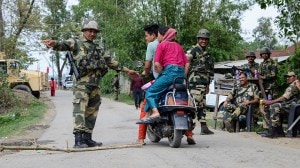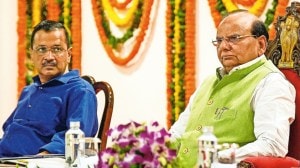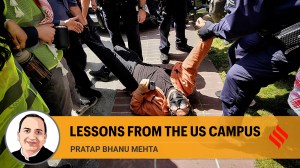- India
- International
The digital equaliser
Internet, mobile penetration is allowing the democratisation of knowledge, communication. Subalterns can now speak, theorise and are no longer dependent on the mainstream
 Today, creating content needs less investment than before. It is more often soft-skill driven. (Representational)
Today, creating content needs less investment than before. It is more often soft-skill driven. (Representational)Written by Mohammad Irshad
Communication and interaction are the glue that allows every community to evolve, organise and grow together. The rise of the virtual world provides subaltern and voiceless people unprecedented opportunities to assert themselves and experience a sense of belongingness. At the same time, it contests the interests of powerful communities and domination at the social-physical level. Online communities are, geographically, much wider and more heterogeneous than physical communities. In the past, many communities in India were not allowed to participate in public discourses, organise themselves and advance their thoughts and ideas. Their concerns, ideas, experiences, ambitions and demands largely went unheard.
Digital social media platforms have enabled them to offer democratic ideas to the world, which rejects prevailing hegemonic norms. Twitter, Facebook, Youtube, WhatsApp and several other platforms have this enabling characteristic, while honouring individual dignity and respect.
Information and Communication Technologies (ICTs) have substantially empowered Dalits, Adivasis, women, economically weaker sections and minorities, despite the uneasiness of the ruling dispensation. ICTs have provided them access to the required information without much obstruction – information and knowledge that is otherwise overlooked by the dominant media.
Theorist Frank Webster concludes that the new information society is more theoretical in nature. People strive to find the conceptual basis for their views, which in turn affects the mainstream narrative, making the media as a whole more democratic and egalitarian.

Today, creating content needs less investment than before. It is more often soft-skill driven. It is also not purely social-capital-caste driven. With the assistance of technology, anyone can create competent, authentic, effective and fresh online content.
With the increasing presence of subalterns and their competence to theorise their experiences (for example, at the Dalit Film Festival in Kirori Mal College, Delhi University, last year), the ability to access information is widening. There is a rise of Dalit intelligentsia and an alternative mass media of and for subalterns.
According to the American information studies scholar, Nicole A. Cooke, information creation and consumption will always be a significant part of our lives and society. Unlike in the earlier agricultural and industrial societies, in the information society, subalterns are attempting to generate a fresh epistemological terrain for themselves in India.
Information society is governed by knowledge workers, who could be from diverse social groups and identities. Meanwhile, the question remains: Why could agricultural society not deliver justice to subalterns in India? Because the entire agricultural economy was under the control of landowners, who belong to the upper castes. Similarly, capital is still largely controlled by upper castes.
The digital age has provided opportunities for anyone to become a knowledge owner and producer instead of remaining a mere spectator and consumer of manufactured knowledge that furthers the interests of certain dominant castes. The reach of mobile technology and the internet has facilitated this, though legitimate concerns about the digital divide persist and discrimination in this respect should not be overlooked.
(The writer is assistant professor, Department of Philosophy, Indraprastha College for Women, Delhi University)
EXPRESS OPINION
More Explained
Apr 27: Latest News
- 01
- 02
- 03
- 04
- 05











































